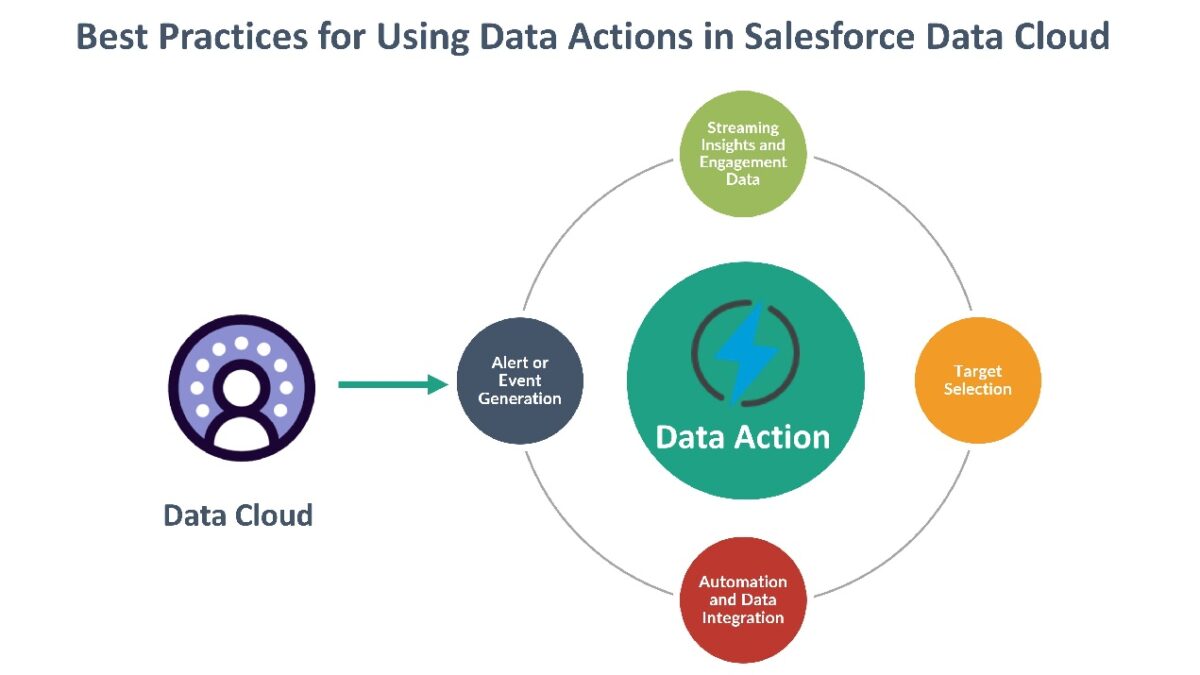When working with data actions in Salesforce Data Cloud, it’s essential to follow best practices to ensure data quality, accuracy, and compliance with privacy regulations. Below are some best practices for data actions within Salesforce Data Cloud:
- Define Clear Objectives: Clearly define the objectives and goals of your data actions. What specific outcomes are you trying to achieve? Knowing your objectives will help you select the right data actions and measure success.
- Data Governance: Establish data governance policies and procedures to maintain data quality and consistency. Ensure that there are guidelines in place for data acquisition, cleansing, and maintenance.
- Data Privacy and Compliance: Adhere to data privacy regulations, such as GDPR or CCPA, when handling customer data. Ensure that you have the necessary consents and permissions to use and process the data.
- Data Validation and Enrichment: Before using data actions, validate and cleanse your existing data to eliminate duplicates and inaccuracies. Then, enrich your data with additional information from Data Cloud to enhance its value.
- Segmentation and Targeting: Use data actions to segment your audience effectively. Target specific groups or personas based on criteria such as industry, location, job title, or other relevant factors.
- Data Mapping and Integration: Ensure that data from Data Cloud seamlessly integrates with your existing systems, such as Salesforce CRM. Map fields correctly to avoid data discrepancies and errors.
- Continuous Data Maintenance: Regularly update and maintain your data to keep it current and accurate. Data can become outdated quickly, so establish processes for ongoing data maintenance.
In addition to the above mentioned, it’s also important to adhere to the best practices for utilizing platform events, webhooks, and Marketing Cloud effectively.




